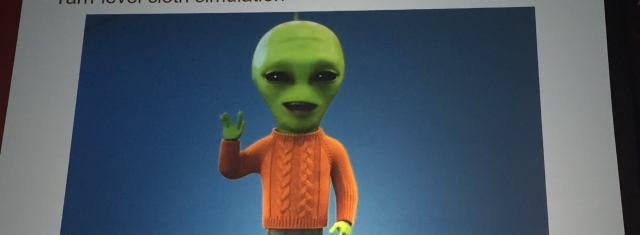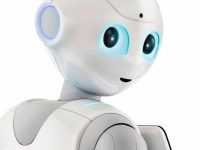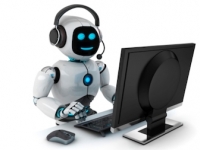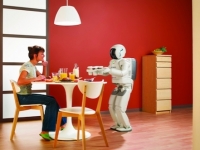Business
THE WORKFORCE OF THE FUTURE
HUMANS AND ROBOTS SIDE BY SIDE

Catastrophic reports that robots in the workplace will drive us into a gloomy existence and dehumanized future, dominate our news. Rapid advances in AI are forcing business leaders to reshape the size and composition of the workforce, understand how it may evolve over time, design an ideal future profile and maximize cost-effective technologies at the same time as nurture employee commitment.
According to a report published by KPMG (2016) between now and 2025, digital technologies will conceivably offset the jobs of 130 million knowledge workers, 47 percent of total US employment. Up to two thirds of the US$9 trillion knowledge worker marketplace may be affected by robotic automation while the Bank of England estimates that 15 million jobs from the United Kingdom economy in the next 20 years.
The new digital labor force will bring a massive disruption to leaders and shapes of organizations. Surabhi Gupta, Director of Engineering at Airbnb, demonstrated how Airbnb has for some years been using machine learning to improve machine learning and offer ultra-personalized travel options to their users. “As these technologies continue to grow, it is critical that we learn and work together so that when we build the best technology, it has the ability to improve lives, build communities, and further human connections. “Machine learning, robotic process automation, cognitive platforms and futuristic approaches to artificial intelligence provide opportunities to learn where jobs and technology are headed. They highlight the need for practical business applications such as natural language processing, pattern recognition in retail, energy, finance and banking, telecommunications, transportation and media.
The San Francisco AI Summit2017 which mobilized over 2000 C-level executives of the world´s leading corporations and start-ups left no doubt that the Forth Industrial Revolution is sweeping through the ranks and taking society to new frontiers at lightning speeds. Perhaps the most salient feature of today´s Fourth Industrial Revolution which brings machine intelligence together with all other digital technologies, is the widespread impact of computerization on all kinds of jobs, from bakers to NASA programmers. It is also foreseeable that middle-ranking jobs are just as likely to be affected as those jobs with obvious susceptibility to automation, such as bank tellers, repetitive manufacturing, and customer service representatives in call centers.
While many jobs will be reconfigured and redesigned, causing job dislocations and requiring employees to learn new skills, a series of potentially positive outcomes await. In a poll of 3000 C-suite executives in 20 industries and 90 countries to understand their approach to AI. (IBM GLOBAL C-suite study, 2017) More than half of them believe AI gives them a competitive advantage by improving customer experience. Using technologies to replace entire roles and job types, in particular, jobs in front line and middle-ranking occupations are likely to see the biggest impact. For example, digital labor can fully replace or work alongside humans in a call center.
Time has come to act strategically and rapidly, translate business strategy into people implications. Being able to move with agility, flexibility, and determination through different contexts is critical to success. Through well-rehearsed improvisation, constant practice, experience, and insight, leaders need to add value, create new opportunities, valuable innovations and implement solutions. Leaders need to determine the direction of the organization, identify how cognitive technologies can help execute that strategy and then translate this business and technology into the implications for people. Frontline jobs and middle-ranking occupations are likely to see the biggest impact as technologies are used to replace entire roles and job types. It is pivotal to create a detailed plan of how structural aspects, such accountabilities, information flows, capability building, and career path of humans and digital labor can be optimally integrated. All workers should be connected to technologies so they access the best ideas and knowledge on any given topic. “Getting this technology out to businesses is really the next thing we need to focus on in order for machine learning to grow up and be something that you can use in the real world,“ Magnus Hyttsten, Senior Developer Advocate for Google TensorFlow argued at the AI SUMMIT2017. “I think we´ve just started to scratch the surface of a more business-oriented deployment of machine learning.“
Cognitive technologies can spur a growth in jobs overall and enhance human skills and expertise. AI has spawned exciting large platforms like Facebook's Bots for Messenger, and voice recognition offerings like Amazon´s Alexa/Echo, Apple´s Siri, Google Assistant, and Microsoft´s Cortana. It enables companies to recognize customer problems and identify patterns by analyzing data much more quickly, and automating human functions to become more efficient. To compete, organizations are “rewiring“ their operating models for speed and responsiveness. The cognitive enterprise can help with becoming situationally aware with the potential to respond autonomously. Ultimately, they can make every employee an innovator and transform the enterprise into an engine of unconstrained innovation.








